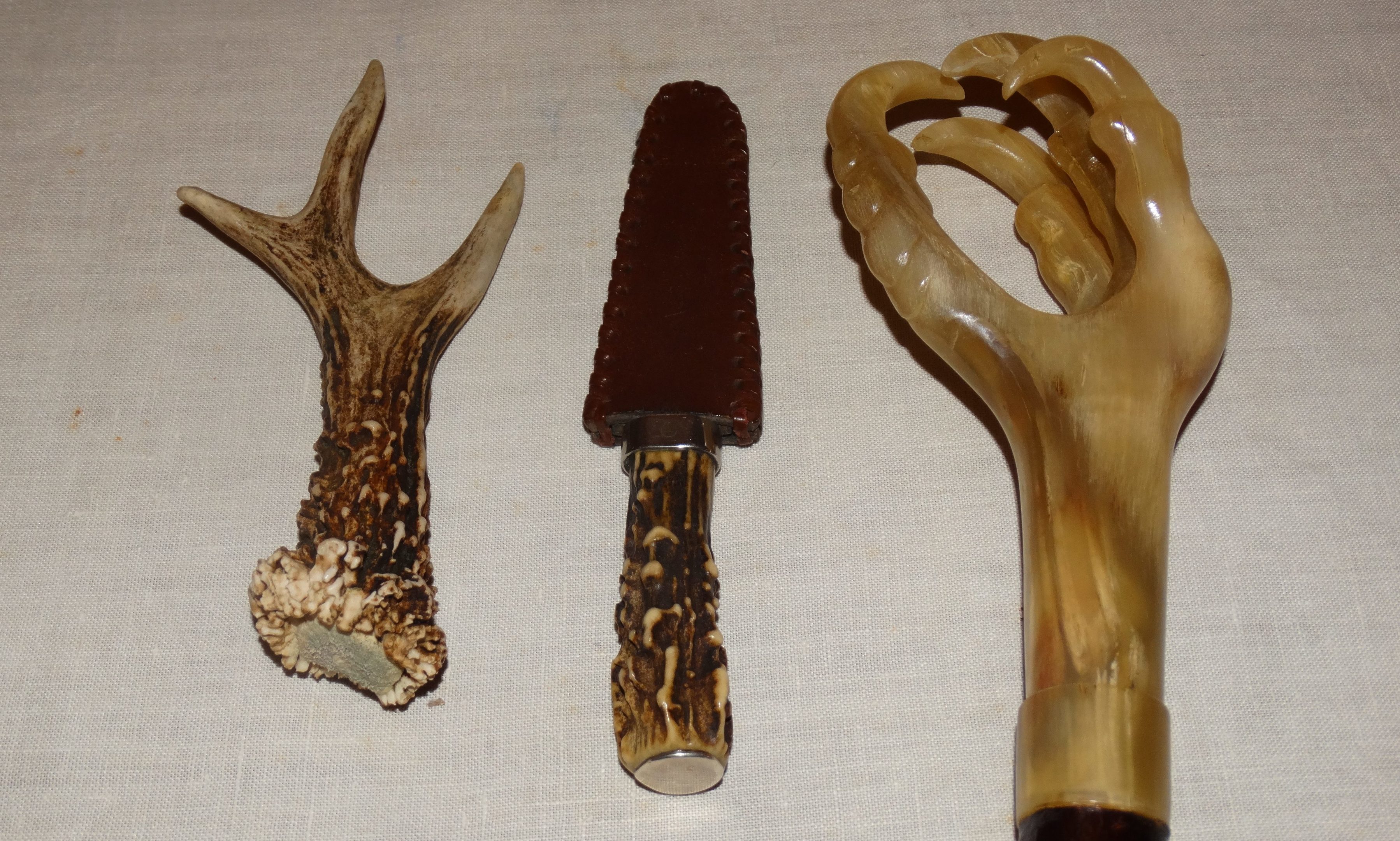You can’t have your head in the clouds all the time when you’re out walking dogs or, before you know it, you’ve tripped on an old twisted root and fallen flat on your face. I certainly spend a lot of my time looking into the sky and all around me but, whiles, it pays to keep an eye on what’s going on beneath my feet.
Only roe deer bucks grow antlers which are cast (i.e. they drop off naturally) each year between October and December, and regrow and are fully developed again by April. Occasionally, walking the high hills of the Angus glens, you may find a red deer antler amongst the heather but, in my experience, you are more likely to come across a roebuck antler in woodlands, the roe deer’s natural habitat.
They are the smaller of our two native species of deer, graceful animals much the same size as a large dog. You will sometimes see them feeding in the open on agricultural crops but they are ever alert and easily alarmed.
If you should slow down in the car to watch them, or they become aware of you, you will see their heads swivel round to gaze straight at you, their big radar ears erect to decode every subtle message. The last you will likely see of them is their white scuts as they head back to the woodland cover.
The antlers grow independently of each other and roebucks rarely have more than three prongs on each, unlike red deer stags which can grow six to produce the classic twelve point Royal head.
It was fully 60 years ago, out walking with my father, that I picked up my first roebuck prong. An uncle who owned an engineering company arranged for one of his apprentices to make me a sgian dhu, using the horn for the handle.
I wonder how often I’d had my head in the clouds and missed the horn in the photograph lying amongst the roots of an elderly pine tree. It fits my hand perfectly as the head or handpiece of a thumbstick. For the shank I’ve cut a holly branch from a tree I pass on another walk. It will take a year for the wood to dry out sufficiently to be able to marry the shank to the handpiece. Then it will stand alongside another thumbstick which has a bit of a history to it.
In 1986 I heard a radio interview with a delightful Northumberland sheep farmer called Norman Tulip – a true artist, considered the best stick dresser of his day. He mentioned the difficulty of getting hold of good rams’ horns.
It happened that I had a pair of old Blackface horns which had once adorned a Borders tup. The Doyenne and I, and our younger son James, visited Mr and Mrs Tulip at their farm at Rennington, near Alnwick Castle. Displayed along one wall of their living room was a breath-taking collection of his sticks.
The sheep’s horn handpieces were carved into pheasants’ heads, a golden plover, brown trout, a pit pony, a gypsy caravan, lobsters, a rabbit caught in a (now illegal) gin trap and many more all signed with his signature reef knot logo.
Mr Tulip took my horns which, unfortunately, were damaged where they had been nailed to a doorpost. It might have spoiled them for stick dressing but with his instinctive countryman’s creativity Mr Tulip saw an eagle’s foot in the undamaged part which he carved into a thumb stick head and married to a blackthorn shank.
After his death his family generously gave me the stick and I’m very lucky to own it. A representative collection of his sticks is on display in Alnwick Castle in his memory as his farm is part of the Northumberland Estates.
